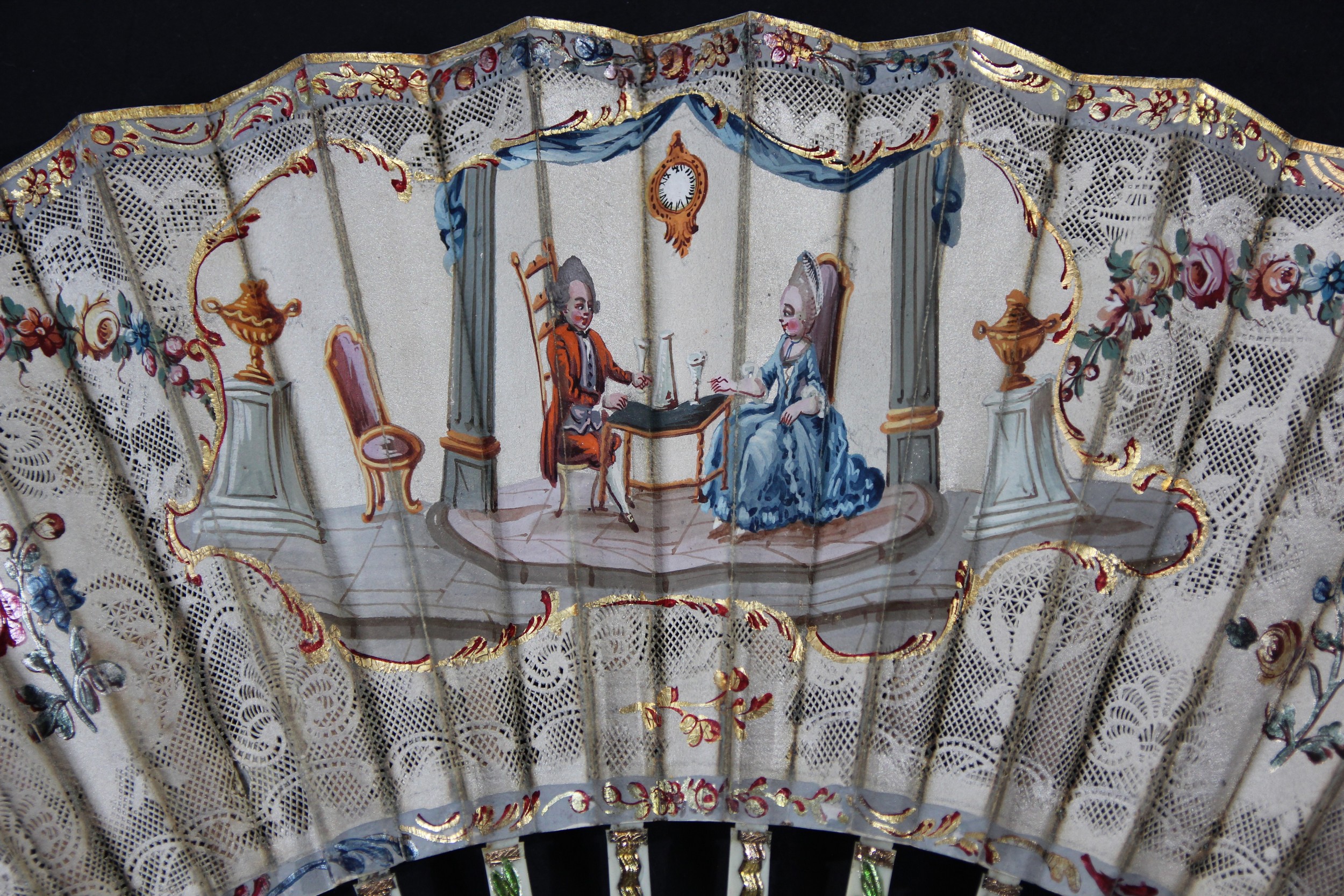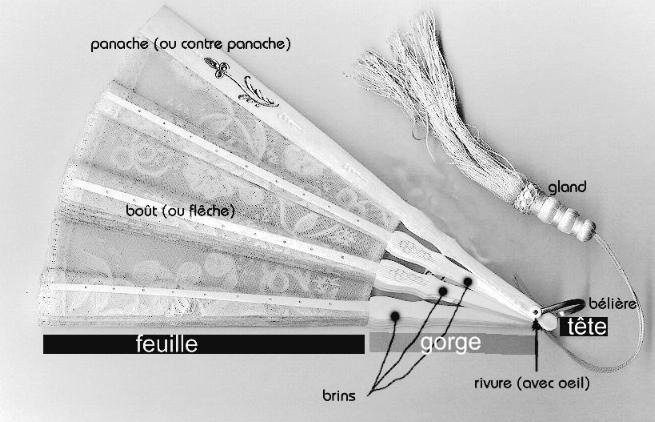
If you are a beginner in fan knowledge, we hope you shall learn something here, and get some pleasure. If you are a "connoisseur", sure you shall find some fan or english mistakes : please tell us ! You can have a look at our "Place de l'Eventail pavement', where you will find details from a choice of our fans. Then, come back to these "rudiments", or browse elsewhere on the site. You can also open a folder we have opened on the Amsterdam Rijskmuseum website, in order to see grat masters paintings showing fans: Riskmuseum folder.

Above a detail of a fan... We renew it according to our mood, "sans rime ni raison, pour le plaisir des yeux" !
http://journalofantiques.com/2017/features/fans-and-fashion/
A good presentation was also given by Georgina-Letourmy Bordier, Ph.D. in History of Art and hand fans expert,
for the Institut Français de la Mode (Paris) in March 2016.
"Une histoire de l'éventail"
You can hear it (in French) and see illustrations here:
http://www.ifm-paris.com/fr/actualite/item/96447-une-histoire-de-leventail-.html
Another presentation by Georgina Letourmy (in French too) can be found here:
https://youtu.be/Tj_bOPMUsqc
"Natural" fan
|
|
|
|
|
|
|
|
Rigid fan
|
|
|
|
|
|
|
|
Feathers fan
|
|
|
|
|
|
|
|
Jenny Lind fan
|
|
|
|
|
|
|
|
Brisé fan
|
|
|
|
|
|
|
|
Folding fan
Fan parts
|
|
|
|
|
|
|
|
